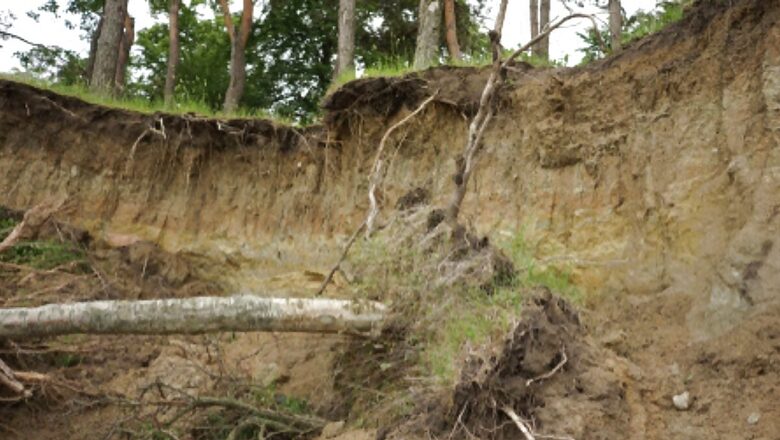
views
There has been massive soil erosion in the Western Ghats Region over the last 30 years which is likely to accelerate future disasters, warns a new study led by researchers from the Indian Institute of Technology (IIT), Bombay. Of all states covered by the mountain range, Tamil Nadu has shown the highest rate of soil loss followed by Gujarat and Maharashtra.
The researchers analysed remote sensing data from the US earth observation satellite LANDSAT-8 and combined with other inputs like the Digital Elevation Model (DEM) and rainfall records to estimate the rate of soil loss from 1990 to 2020. The findings show that the rate of soil loss in some parts has increased by 94 per cent between 1990 and 2020.
“The Western Ghats are a very unique spot in the world, however, the management of this ecosystem needs more focus. The current situation poses unique challenges for the policymakers to address,” said lead author Prof Pennan Chinnasamy from IIT Bombay, who led the study with Vaishnavi Honap. The team stressed upon the need for reducing human disturbance and increasing conservation activities.
TAMIL NADU MOST IMPACTED
The chain of mountains running parallel to the west coast from Gujarat to Tamil Nadu form a critical biodiversity hotspot. However, the ecologically fragile region has borne the brunt of unsustainable and unplanned human activities with several studies warning of its disastrous long-term impacts.
According to the latest study, the region has witnessed an average soil loss of 32.3 tons per ha/year in 1990 which increased to nearly 62.7 tons per ha/year in 2020. The figures indicate a staggering net increase of 94 per cent in soil erosion — a trend that is detrimental to the region’s globally important biodiversity.
Tamil Nadu recorded the highest soil loss rate — a staggeringly high increase of 121 per cent from 1990 to 2020. Kerala also witnessed an unsustainable rate of soil erosion at 90 per cent, alongwith Karnataka (56 per cent). The situation is equally dire for the hilly region in Goa and Gujarat. While Goa showed an increase of 80 per cent in soil erosion, it was 119 per cent for Gujarat, followed by Maharashtra where the soil losses surged by 97 per cent.
WHY ARE THE FINDINGS WORRYING?
The alarming increase in soil erosion is indicative of how fast the land degradation is happening in the environmentally sensitive region, which is prone to disasters. The intensity of heavy rainfall events has increased under the impact of climate change rendering the region vulnerable to large-scale floods. The region also supports unique wildlife species, the continuity of which is critically threatened by the loss of fertile soil.
This also raises risks of agricultural losses, as land productivity goes down, along with quality of freshwater sources, posing significant ecological and socioeconomic challenges besides affecting the biodiversity of the region.
The findings point towards the escalating impact of climate change, combined with land mismanagement, as key contributors to the rising soil erosion. Increasing soil conservation activities and reducing anthropogenic disturbances can not only mitigate climate change impacts but also avert the imminent erosion-induced damage to this fragile ecosystem, as per the study.
The study also calls for the physical monitoring of soil loss and erosion at multiple locations across the Western Ghats to scientifically validate the remote sensing data which has its own limitations. The team had used the Universe Soil Loss Equation (USLE) method to predict the extent of soil loss. They digitised multiple maps to get the consolidated boundaries of the Western Ghats, and used advanced computing facilities at IIT Bombay to process the large datasets.


















Comments
0 comment